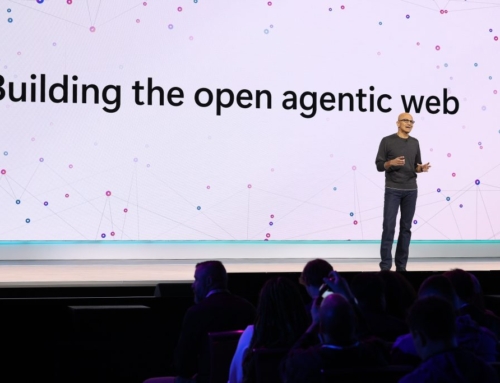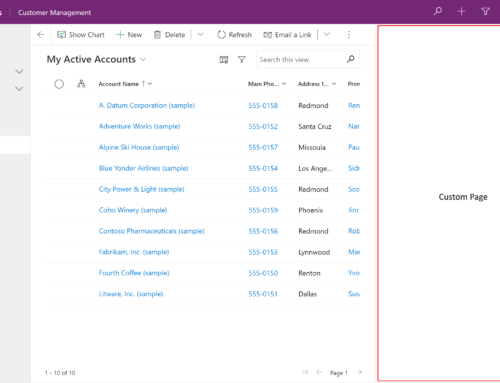Power Platform Center of Excellence – A Real World Governance JourneyPart 3: Power Platform CoE Sustainment – Nurture Makers and Support Operations
By Cathy Ashbaugh, Vice President, Client Success and Qais Gharib, Practice Manager, Business Applications.
In our 3-part series, Power Platform Center of Excellence – A Real World Governance Journey, we are sharing the why and the what of putting a Power Platform Center of Excellence (CoE) in place. The “Real World” part of the journey is the work our client, Company X, a global F100 firm with more than 200,000 employees, has done to educate the organization, gain support, resources, and commitment to implementing a CoE and the work we’ve done together to get the CoE up and running. In Part 1: Recognizing Risks, we introduced the program and how the need for governance became apparent as the usage of Power Platform exploded throughout the organization. In Part 2: Leveraging and Building Upon the Power Platform CoE Starter Kit, we outlined the feature set of the Starter Kit, the value it provided, and the gaps we recognized and addressed through a series of customizations and solutions. In Part 3, we share more on the journey to date and future initiatives to enable, nurture and provide continual support to the maker community, which for Company X is currently at 10,000+ people and growing.
Enabling the makers
The first step in a Power Platform CoE implementation is addressing the organization’s risks by identifying, securing, and operationalizing assets and solutions already in use. While the IT activities and components are critical, an equally important purpose of the CoE is to enable and nurture a community of makers to get full value from the platform.
Why do we want to enable non-IT people to build on low-code platforms like the Power Platform? The answer is clear. The demand for automation far exceeds the supply of developer resources and that divide grows every day. Gartner forecasts the Low Code Application Platform (LCAP) market, of which Power Platform is a leader, will grow by 20% this year. These LCAP tools are enabling a community of makers to build productivity solutions to make their day-to-day tasks more efficient and effective and reduce the automation request burden on IT. At Company X, the Power Platform and M365 platform owners recognized the need for governance AND the value that enabling their makers to create solutions in a safe, secure manner brings to the organization.
With the foundational tools in place for governance, there is a renewed focus on enabling makers to build the productivity apps they need and supporting their efforts with evangelism, training, tools, templates, and the establishment of a community of Power Makers. While Compass365 is often engaged to develop Power Platform solutions that are more complex, contain sensitive data and/or run critical business processes, many productivity apps can be built by makers throughout the organization. To determine if the proposed app should be built by the maker community or by pro developers/IT, several factors should be considered including who will use the app, what data or sources are contained in the app and who will need to maintain the app.
Power Apps can be generally categorized as follows:
- Productivity Apps: Maker built. Small, safe, and contained.
- Business Apps: Maker and pro developer/IT built. Larger, more complex apps that may contain sensitive data, connectors, or DLP, and require operational support.
- Enterprise Apps: Pro Developer/IT built. Organization-wide apps that will be monitored and supported by IT.
Connect with the maker community
In keeping with Microsoft best practices, a good first step is to connect with the community to understand what they are trying to achieve and what they need to create and grow a successful community of Makers. It’s a journey of continuous learning for all, but asking the following questions is a good start:
- Who are our Makers?
- How can we help them succeed?
- How can we recognize their efforts and successes?
- How can we grow the community?
Resources needed
There are plenty of resources including the nurture components in the Power Platform CoE Starter Kit, the Microsoft Power Platform Adoption Workbook and the Power Platform Adoption website, step-by-step advice, guidance and tools exists to fully enable your community of makers. In the real world, however, each organization is different with a different set of goals and the resources – people, authority, and budget – to support the effort. One of the key barriers to releasing the Power Platform out to the maker community is cost, including investment in the CoE program, licensing, expanded storage and IT support. Fortunately, while Company X is concerned with budget like most organizations, they are even more concerned with risk, security, and compliance. With a compelling use case and strong desire to enable makers throughout the organization, our client was able to secure the funding to see the CoE program through.
Nurturing makers
While still a work in progress, Company X is now in a nurturing phase of the effort and encouraging employees to connect and support each other to build on the Power Platform. Some of the ways you can encourage your makers are:
- Build the community of makers by locating and empowering champions in the organization.
- Promote the opportunity to those who may be curious but haven’t yet engaged.
- Support the community efforts with sites, wikis, templates, and reusable components.
- Provide guidelines, tools, and best practices.
- Create a central template for a standardized look and feel that represents your brand.
- Share success stories and get testimonials from your champions.
- Organize training and hackathon events.
- Provide opportunities for experienced makers to learn more.
- Coordinate solutioning workshops
- Create an intake process to help with the evaluation and categorization of requests.
- Engage a partner to build out more complex business and enterprise apps.
- Encourage and incorporate feedback
- Make it known that IT supports and encourages the efforts.
Educating and supporting the maker community
A challenge we faced along the way is that it is difficult to put controls on a tool that’s been widely adopted. Early on, Power Platform was released to the Microsoft 365 tenant with no licensing costs and guidance on the potential security risks. Building Power Apps was encouraged and as Company X determined, its usage spread like wildfire. As outlined in part 1 of this series, an astute IT team recognized the security and compliance gaps and sounded the alarm to stop, take a look, and address the issues. By the time they did this, more than 30,000 assets (apps, flows, and bots) had been added to their tenant and there were many glaring security and compliance risks in active apps in production. To get a handle on the environment, controls were put in place and makers were educated on the risks.
Now that we are in the nurturing phase of the CoE, some makers are skeptical, even hesitant, to build. Company X is invested in educating the community, supplying them with tools, helping to remediate any issues, and establishing guidelines so that once again, the community of makers is confident and ready to address their needs for efficiency with productivity apps that meet corporate compliance standards.
An ongoing partnership
As outlined in part 2 of this series, Company X and Compass365 implemented the foundational components of the Power Platform Center of Excellence, augmented by the custom build of an Inventory and Attestation Power App used to evaluate the risk and compliance score of more than 30,000 assets (apps, flows, bots) and enforce the appropriate action. Next up on the IT roadmap are the implementation of ALM Accelerator, Pipelines, Environment Request App, and ServiceNow Integration. Company X now has the confidence to encourage, promote, and support makers and pro-code development partners like Compass365, to take full advantage of the Power Platform to improve efficiency, visibility, and productivity throughout the organization. They will take the lead in enabling, nurturing, and supporting makers, while we work together to further build out operational process improvements.
Governance to support security and increase productivity
Don’t let the (very real) concern with security, risk, and lack of compliance hold your organization back. The Power Platform is a fantastic set of tools to empower and enable your staff in a world where the demand for solutions greatly outweighs the ability to meet those demands in a timely manner. Now, with expanded governance tools (such as the Power Platform CoE), nurturing tools (such as community hub content, video, and more), and IT operational support tools (such as ALM), you can safely and securely put the power to be more productive directly into the hands of your staff.
Advice from our client at Company X:
Begin with the end in mind and work backward.
Look at the expected results as well as effort from all angles – makers, developers, security, and IT operations.
Know your stuff.
Lay out your strategy, your why, and realistic expectations of time, budget, and effort to bring the CoE to fruition.
Make friends in all areas of the organization.
Power Platform governance is not achieved in a vacuum. You will need cooperation from many areas of the organization and levels of leadership.
Begin your Power Platform CoE Journey
If you are ready to empower your citizen developers in a safe, secure, operationally efficient way, our Power Platform Center of Excellence program is for you. If you would like to learn more about services to get your Power Platform Center of Excellence up and running, please contact us to arrange a complimentary consultation.
Compass365, a Microsoft Gold Partner, delivers SharePoint, Microsoft Teams, and Power Platform solutions that help IT and business leaders improve how their organizations operate and their employees work.









